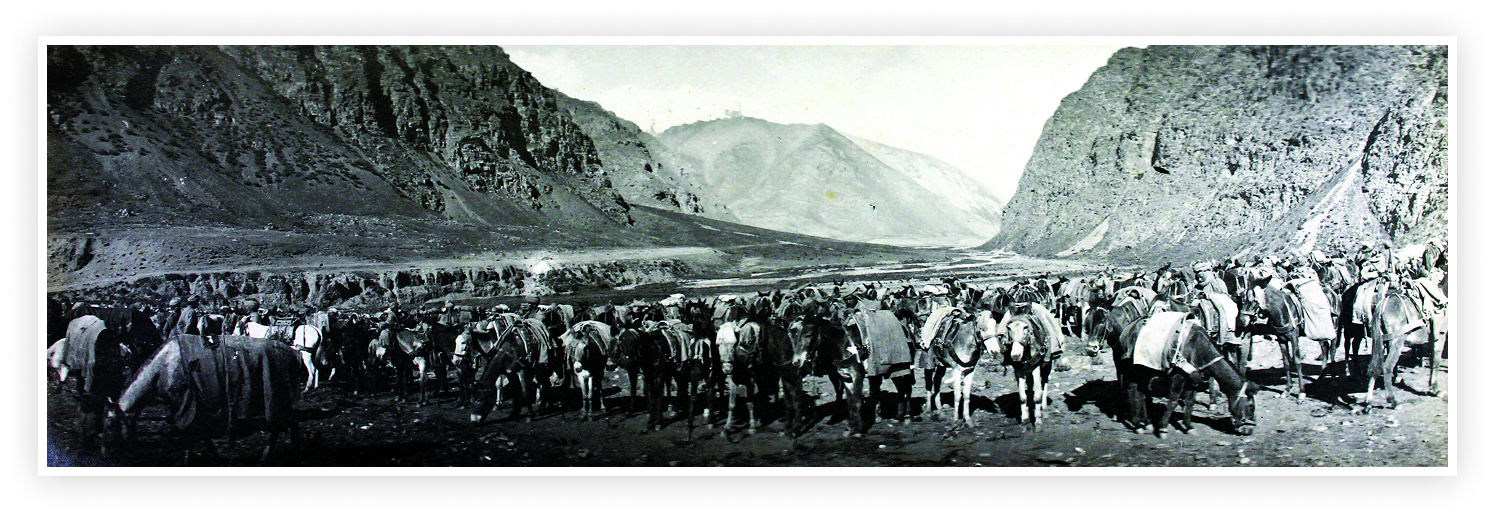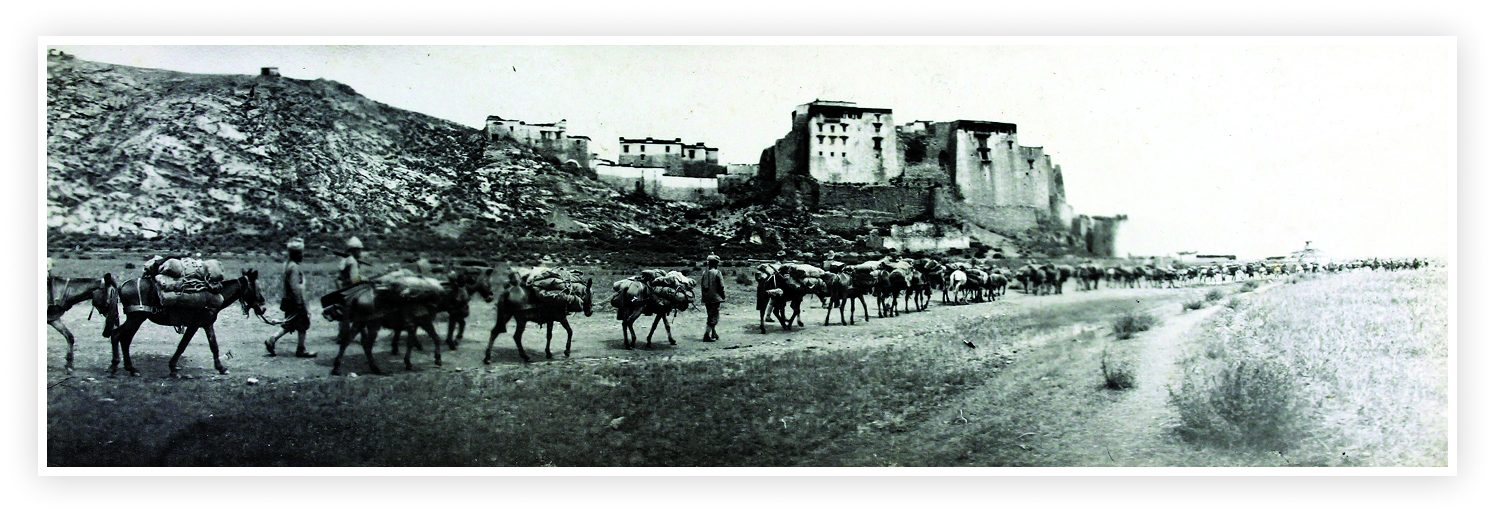The Animal Corps
Yatung is reached by one of the worst sections of road on the march, one comes across a dead transport mule at almost every zigzag of the descent.
The Unveiling of Lhasa, by Edmund Candler, 1905

“Mules just picketed on arrival in camp below Karo la.” Panoramic photograph by John Claude White.
There were many silent victims of the British Mission to Tibet. Members of the army’s ‘Animal Corps’ died in their thousands from disease, hunger, cold, and poor equipment. However, the dead were not humans, but yaks, bullocks, mules, and ponies.

The ekka, or pony cart was adapted to fit the yak, so it could carry more supplies. In his book, The Unveiling of Lhasa, Edmund Candler was certain that, “It was due to the light ekka and that providentially ascetic beast, the yak, that we were able to reach Lhasa.”
More than 5,000 yaks marched from Nepal to Sikkim and then to Tibet. Not one survived. Large groups died each day from anthrax, foot and mouth disease, and the heat. Half of the mules and ponies tasked with carrying the army’s food and supplies died from starvation or exhaustion. Without these animal recruits the Mission could not have reached Lhasa.

“View of Potala from North.” Panoramic photograph by John Claude White.
Yatung is reached by one of the worst sections of road on the march, one comes across a dead transport mule at almost every zigzag of the descent.
The Unveiling of Lhasa, by Edmund Candler, 1905

There were many silent victims of the British Mission to Tibet. Members of the army’s ‘Animal Corps’ died in their thousands from disease, hunger, cold, and poor equipment. However, the dead were not humans, but yaks, bullocks, mules, and ponies.

More than 5,000 yaks marched from Nepal to Sikkim and then to Tibet. Not one survived. Large groups died each day from anthrax, foot and mouth disease, and the heat. Half of the mules and ponies tasked with carrying the army’s food and supplies died from starvation or exhaustion. Without these animal recruits the Mission could not have reached Lhasa.
